The case for A-REITs
The recent market downturn and macroeconomic environment has improved the valuation profile and outlook of Australian Real Estate Investment Trusts (A-REITs).
The outlook for A-REITs looks positive despite concerns about higher interest rates and inflationary pressures.
Year to date performance
2022 has been a challenging year for A-REITs, in part due to the sector’s long exposed durations and ensuing price sensitivity to interest rate changes. As such, the sector has been one of the worst performers over the first half of the year, as interest rates and inflation have crept higher. Furthermore, the Australian government 10 year bond yield has more than doubled to 3.44 percent so far this year, negatively impacting A-REIT returns relative to the Australian benchmark S&P/ASX 200.
Figure 1: Year to date Australian sector performance
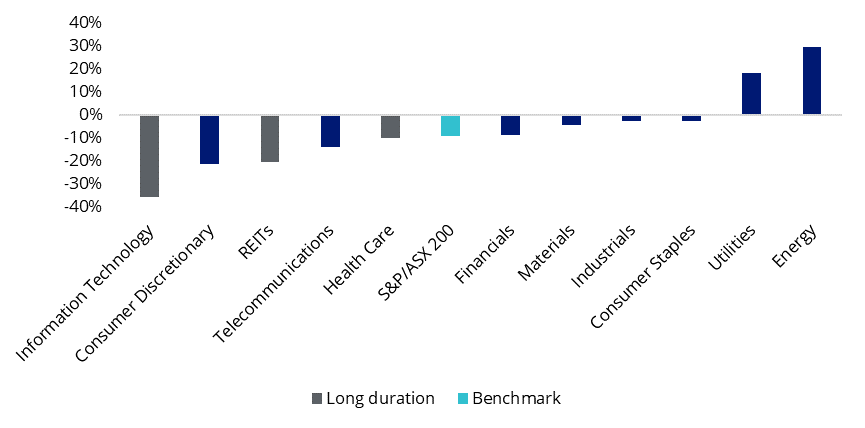
Figure 2: A-REITs performance relative to S&PASX 200 versus Australian government 10 year bond yield
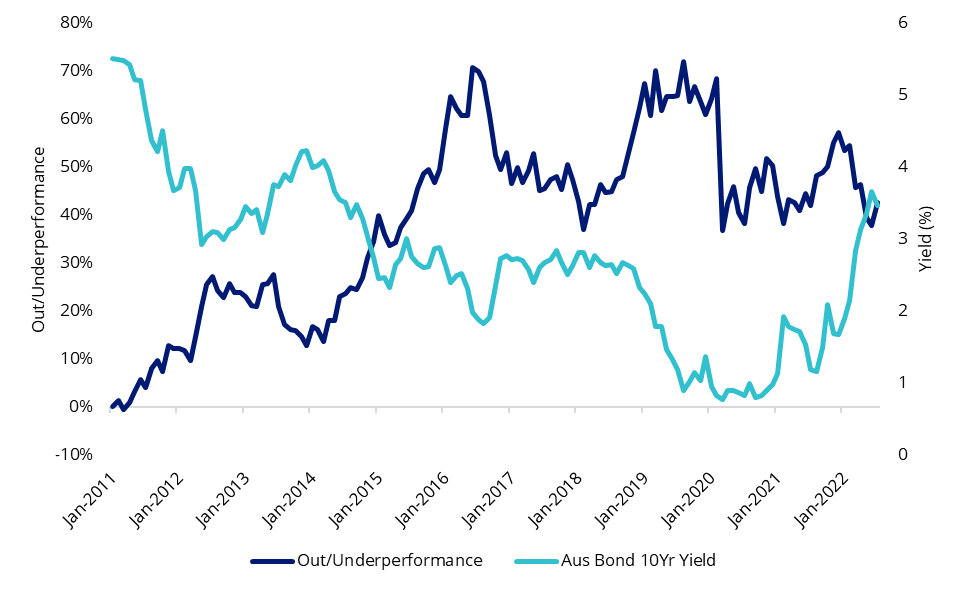
Source: Bloomberg, Out/Underperformance as MVIS Australia A-REIT cumulative performance relative to S&P/ASX 200. Past performance is not indicative of future results.
REIT growth orientated subsectors trading at higher valuation multiples such as industrials were more adversely impacted by rising yields.
Figure 3: A-REIT subsector performance yield to date
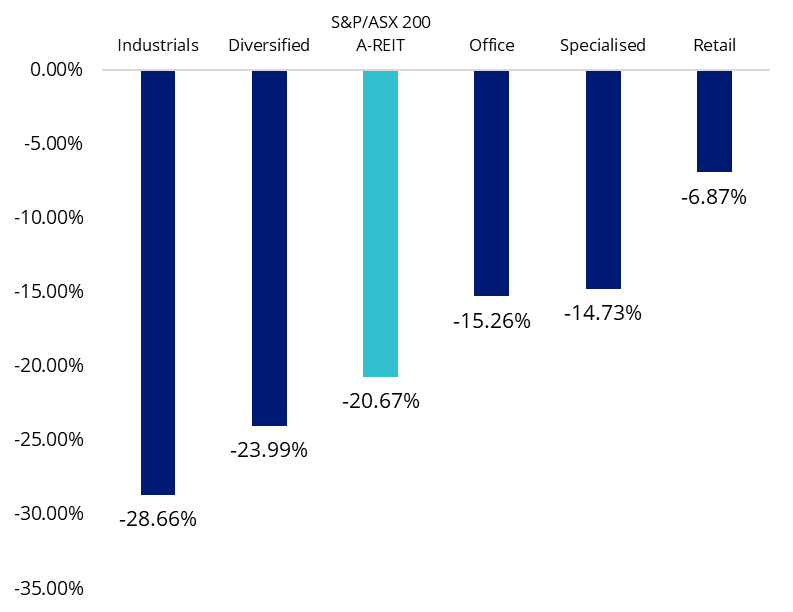
A-REIT outlook
However, the outlook for A-REITs looks more promising for three main reasons.
Firstly, long dated government bond yields could be close to reaching their peak. Broker consensus is that the expected RBA cash rate increases over the next 12 months have been priced into the Australian Government 10 year. The forecast sees the yield marginally increasing by 23 basis points by December 2022 before falling to 3.14 percent by December 2023 as aggressive monetary tightening dampens economic growth.
Figure 4: Australian government 10 year bond yield median broker forecast
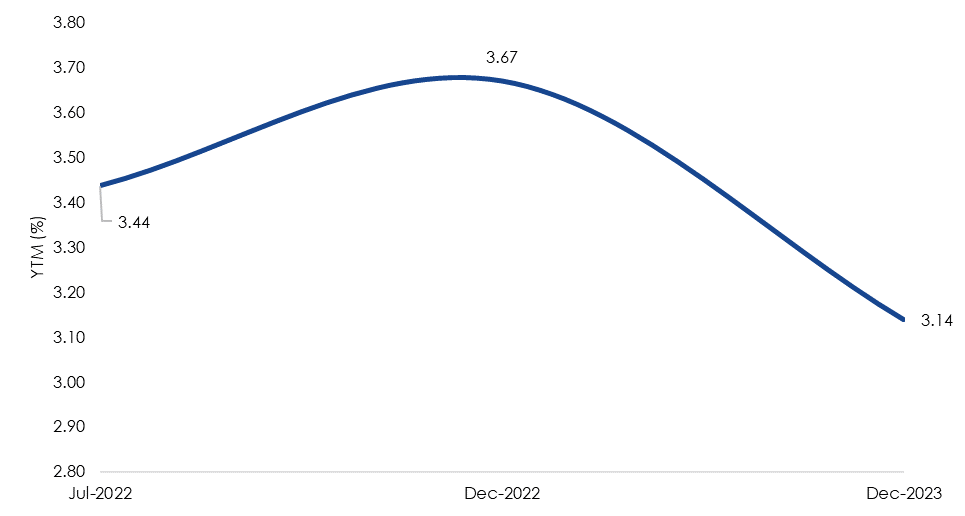
Secondly, if the Australian economy enters an environment of sustained inflation and growth such as the period between the end of the dot-com bubble and Global Financial Crisis, REITs are well positioned. During this period Australian CPI year-on-year was 2.9 per cent on average, which is near the RBA’s current upper bound inflation target of 3 per cent. Australian 10 year government bond yields steadily increased over this time, reflecting strong economic growth.
REITs historically outperform in this type of environment, as inflation linked rental income outweighs the impact of moderate rising yields on returns. Commercial leases and contracts in office and logistics typically have inflation linked annual increases in rents written into the contract. A-REITs, as measured by the S&P/ASX 200 A-REITs index outperformed S&P/ASX 200 by 3.99 percent per annum between 1 January 2002 and 31 December 2006.
Table 1: Australian economic indicators
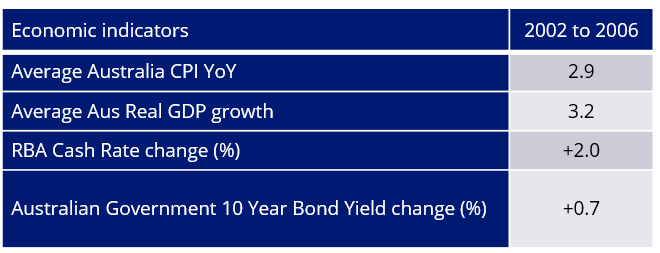
Finally, the recent drawdown in A-REIT performance potentially presents a value opportunity. Price to Adjusted Funds From Operations (AFFO multiple) and price to net tangible assets (NTA) are at a 9 year low and an historic low based on available data. These measures are market convention for valuing REITs and are preferred to metrics such as price to earnings ratios.
Figure 5: A-REIT AFFO Multiple – 2013 levels
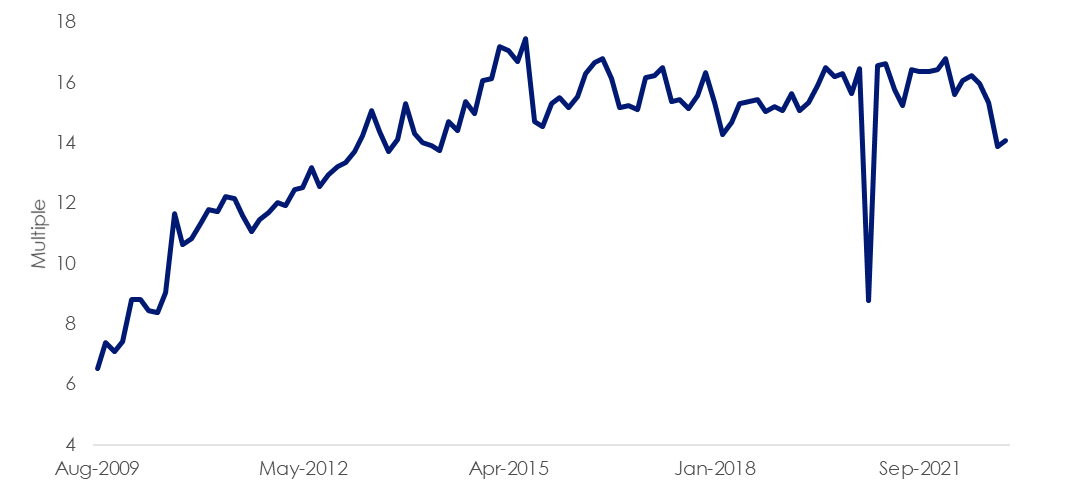
Figure 6: A-REIT Price to NTA – historic low
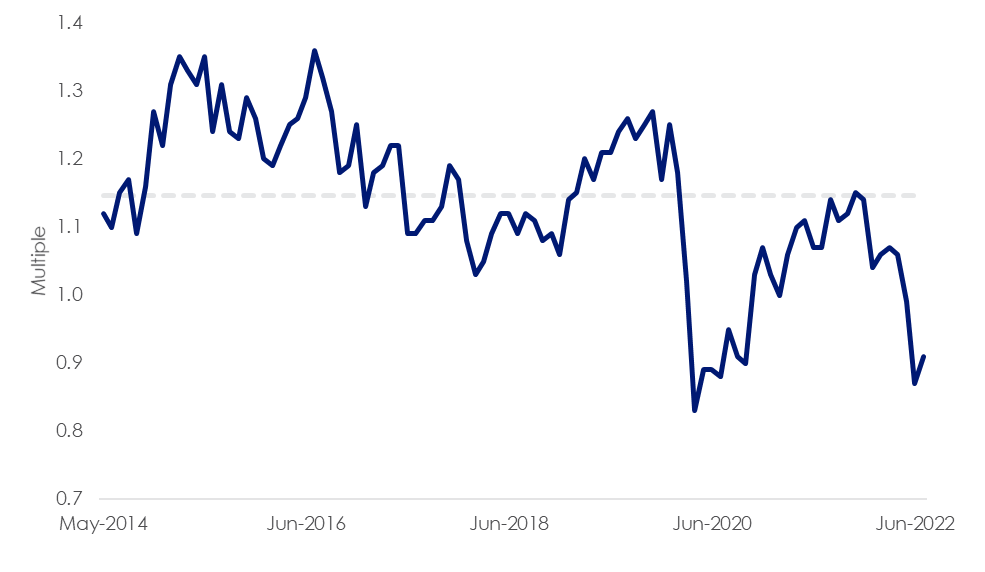
5 topics

